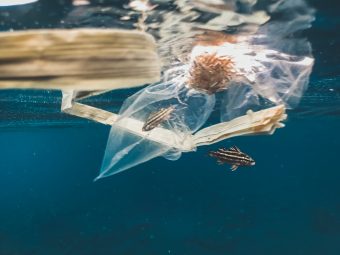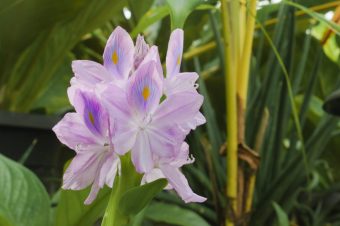
Plastic pollution leads to various problems, especially for marine animals, which get injured when they get stuck in or swallow a plastic object. There are also warnings that certain plastic products should not be used more than once because such use results in the release of chemicals that have a negative impact on health. Plus, there is inadequate management of plastic waste when, for instance, it is burned, which releases polluting gases and particles into the air.
There is another problem, which I assume that a large segment of the public has at least heard about – microplastics. As the name suggests, these are tiny pieces of plastic, less than five millimeters in size. They are created by the decomposition of plastic objects. Microplastics can be released not only from plastic bottles or bags but also from clothes. Some plastic fibers found in fabric, such as polyester and nylon, are released during washing and end up in the environment through water runoff.
Earlier research has shown that one way to reduce the release of microplastics from clothing is to hand wash it, that is to hand wash the fabric that contains plastic fibers. Research has shown that during washing clothes in the washing machine, significantly larger quantities of this type of plastic are released.
Among the various solutions to reduce this pollution, scientists from the University of Portsmouth and the Maritime Institute of Flanders also developed one – plant-based plastic. Namely, scientists analyzed how conventional and bioplastics react in extreme conditions. Specifically, they wanted to see how much microplastics each type of plastic would release. The results showed that bio-based plastics, i.e., those released by natural raw materials, managed to last longer when exposed to intense UV radiation and seawater.
The relevant data show our attitude towards plastic. For instance, almost 400 million tons of plastic are produced annually, and nearly half of it is disposable. Of that quantity, over 10 million tons end up in the oceans.

Scientists have been working hard to find natural materials that are suitable for the production of bioplastics. This material is made from different plants, algae and microorganisms, such as bacteria. One of the more recent developments is the production of such material from water hyacinth.
I chose this particular example because, in addition to replacing conventional plastic, scientists say water hyacinth can solve a significant environmental problem. This plant is an invasive species that is endemic to South America. It was introduced to the rest of the world as an ornamental plant. Still, once it reaches the environment, i.e. water, it spreads quickly and leads to negative consequences for the rest of the living world in that ecosystem. Hyacinth creates dense deposits and thus prevents sunlight penetration below the water’s surface. When it withers, its decomposition in the water leads to the accumulation of organic matter that can reduce the presence of oxygen and change the chemical composition of the water.
If managed properly, its characteristic of reproducing very quickly can be beneficial. One of the ways is to use it in the production of bioplastics.
The endless possibilities that nature offers us and man’s strong will to examine it for useful purposes will ensure the well-being of all.

